Type species: Sphinx oenotherae [Denis & Schiffermüller], 1775.
A Holarctic genus containing six species, with only one occurring in the Palaearctic region.
IMAGO: Forewing with dark transverse bands; distally dentate (more so in some species than others). Genal process large, triangular, nearly reaching tip of pilifer. Eye with long lashes dorsally. Antenna club-shaped, abruptly narrowing to an apical hook; terminal segment at least three times as long as broad. Abdominal spines weakly chitinized; abdomen with short tufts of scales laterally; anal tuft truncate. Tibiae spinose; foretibia with apical thorn and a lateral row of long spines, the basal one the shortest. Spurs of mid- and hindtibiae unequal, longer ones equalling or surpassing in length second tarsal segment. Mid- and hindtarsus without basal comb. Ventral lobes of paronychium very small; pulvillus present. Vein M2 of hindwing central; M3 and Cu1 rather close together; D2 transverse, slightly concave, D3 oblique, lower angle of cell little produced.
Genitalia. In male, uncus and gnathos simple, similar to those in Macroglossum. Valva without friction scales; sacculus vestigial. Saccus relatively narrow and short. Phallus with a horizontal, apical, pointed process, directed dextro-laterad.
OVUM: Small, almost spherical, green, glossy.
LARVA: Bears dark, oblique, lateral stripes sloping up towards the head. Head small, not granulose, but hairy. Thorax constricted anteriorly. Young larvae striped longitudinally. In final instar, horn small or replaced by a button.
PUPA: Proboscis fused with body, not cariniform. Slender and glossy with two frontal tubercles. Metathorax with an interrupted, transverse carina. Cremaster long and thin, terminating in two spines.
HOSTPLANT FAMILIES: Herbaceous plants, mainly of the Onagraceae and Lythraceae.
UK: Willowherb Hawkmoth, F: Sphinx de l'Épilobe; Sphinx de l'Oenothère, D: Nachtkerzenschwärmer, RUS: Zubokrylyi Brazhnik, S: Nattljussvärmare, NL: Teunisbloempijlstaart, CZ: Lišaj pupalkový, H: törpeszender, E: esfinge prosperina, PL: Postojak wiesiolkowiec, FIN: Helokkikiitäjä, I: sfinge dell'epilobio, PT: Esfingídeo dos epilóbios, HR: vrbolikin ljiljak, DK: Natlyssværmer.
Sphynx proserpina Pallas, 1772, Spicilegia Zool. quibus novae....et obscurae anim. species....illustrantur 1: 26.Type locality: Francofurtum ad Moenum, Germania [Frankfurt am Main, Germany].
(Taxonomic note. 'Subspecies' gigas and japetus are not tenable as there is no consistent character which can be used to separate them from subsp. proserpina.)
[Further details on this species, as well as photos of all stages, can be found on Lepiforum.]
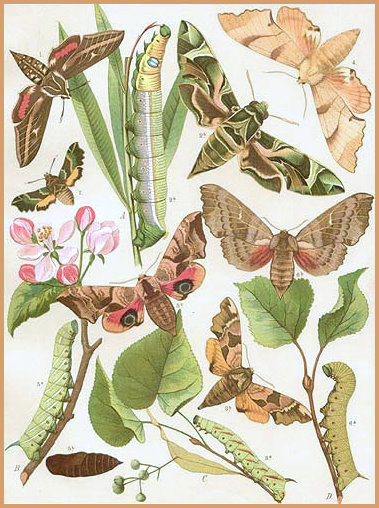
Holarctic; western Palaearctic region. Pleistocene refuge: Polycentric -- Atlantomediterranean and Pontomediterranean subsections of the Mediterranean refuge, as well as the Turkestan refuge.
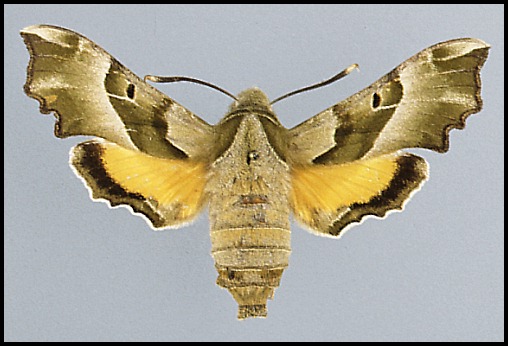
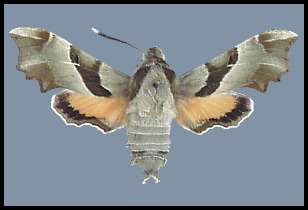
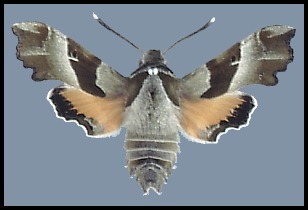
Wingspan: 36--60mm.; most about 46mm. Difficult to confuse with any other sphingid from the region. Although highly variable in size, colour variation tends to be minimal, being confined to the primary ground coloration, which is normally shades of green: f. schmidti Schmidt has yellow-grey forewings and grey hindwings; f. brunnea Geest has a pale 'leather' coloration with a reddish median band; f. grisea Rebel has the green coloration entirely replaced by grey.
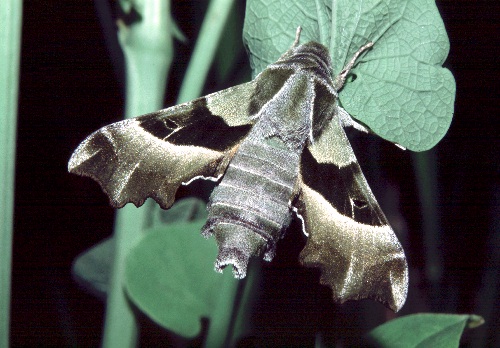
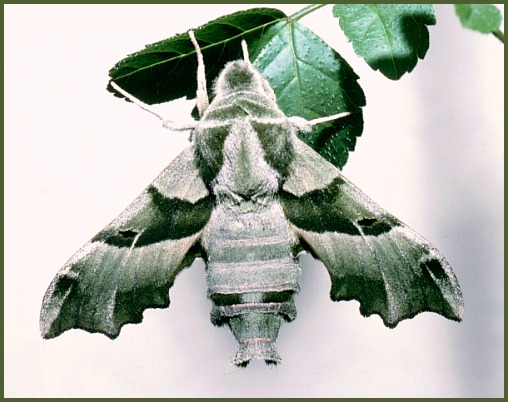
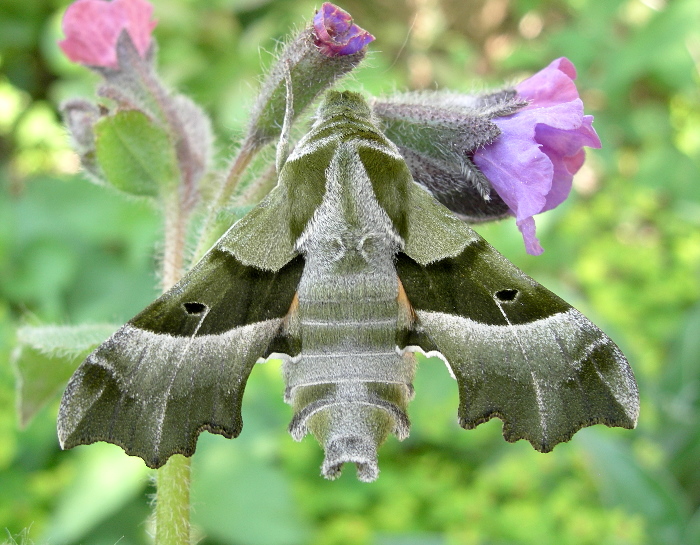
A local species, often disappearing from a locality for a number of years, but appearing in another. Mainly found in damp, woodland clearings and edges of woods, especially in valleys. Also sandy, waste ground in and around towns where Epilobium and Oenothera are common. In the Alps occurs up to 1500m, in Spain to 2000m (Gomez Bustillo & Fernandez-Rubio, 1976), and in Afghanistan at 1900m (Daniel, 1971).
Few adults are found due to their predominantly green coloration combined with their preference for resting among low vegetation at the base of the plants. Flies for only a short period each day, usually at dawn and dusk (Rondou, 1903), although individuals have been seen in sunlight at midday (Pittaway, 1993). Attracted to strong-smelling flowers such as Jasminum and Echium.
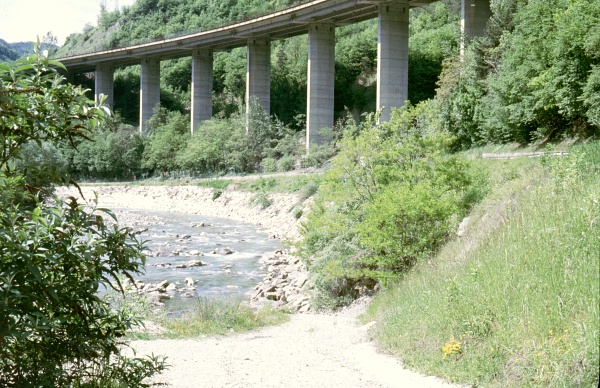
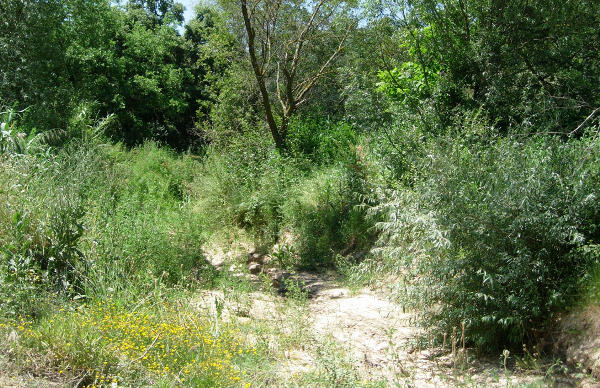
Univoltine. Normally during late May and early June. Over its southern range, including the Lebanon, in mid-May. At altitude in the Pyrenees, during June and July (Rondou, 1903). However, Lhonore (1988) has evidence that this species may be partially bivoltine in France, with larvae occurring in June and September. In Navarra Province, Spain, from early May until late July, with a peak in late May and early June (Cifuentes, 1997); however, individuals have been seen in southern Spain as early as early April (Stephen Knapp, pers. comm. 2022).
Bivoltine in North Africa; March and June/July (Rungs, 1981).
OVUM: Small (1.1 x 1.0mm), green and glossy. Laid singly on the under-surface of leaves, close to the flower-heads, often more than one to a plant.
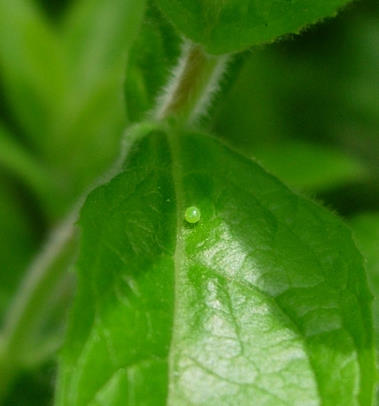
LARVA: Full-fed, 60--70mm. Dimorphic: green or brown.
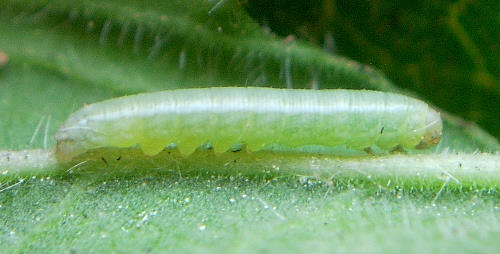
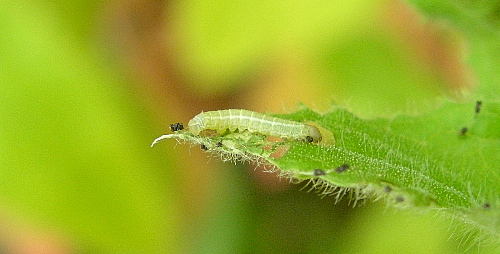
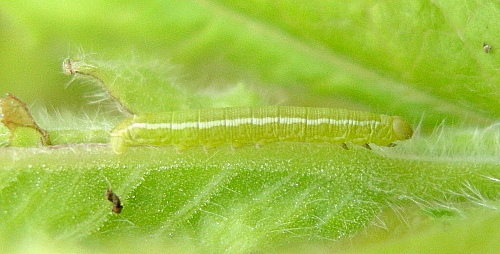
Matt green when young with a yellow dorso-lateral line, a yellow head and a matt yellow spot supplanting the horn. Spiracles black, ringed with yellow. At this stage it feeds quite openly, either on the upperside of a leaf or, when on Oenothera, on the flowers. However, half-grown larvae show a preference for resting head down on small stems, with the head buried in the base of a leaf (see images below).
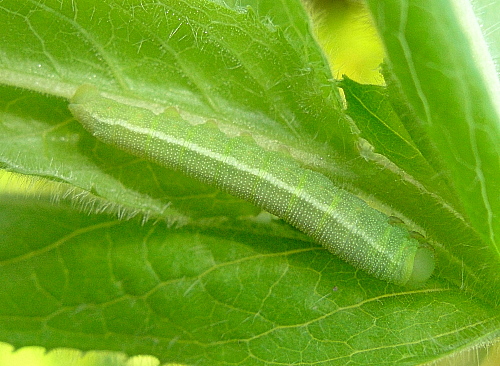
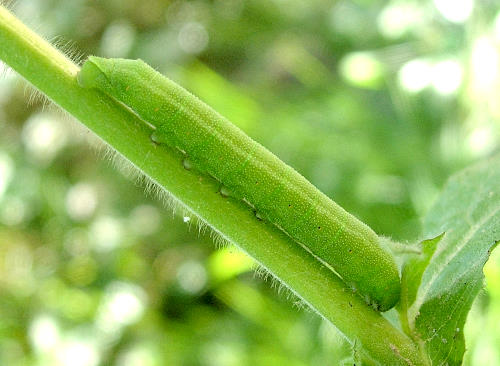
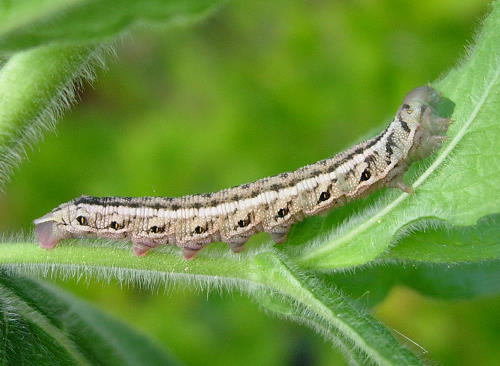
Growth is slow at first, but speeds up considerably on reaching the fifth instar, at which stage most individuals leave the hostplant to hide during the day, either at its base or somewhere nearby (Caradja, 1893). The majority will now have acquired their final coloration: dorsal surface brown with black dots; sides and ventral surface buff, cris-crossed by a network of fine, dark lines. Spiracles brown, each set in a brown spot elongated into an oblique streak. Head brown; posterior button (in place of horn) yellow or orange, brown-centred and black-ringed. A few, however, remain primarily olive-green throughout the larval stage but still bear the standard pattern. Similar to the larva of Rethera komarovi (Christoph, 1885) (Pittaway, 1979a; Pelzer, 1991).
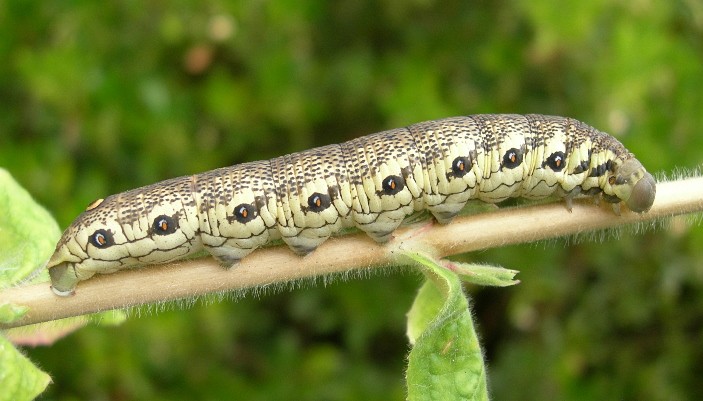
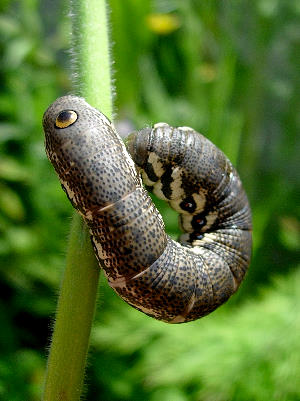
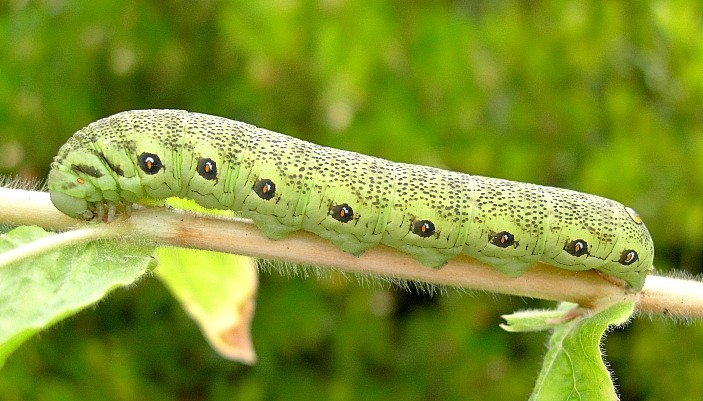
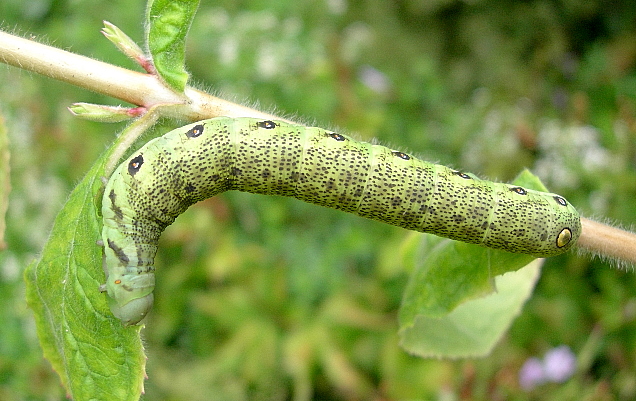
Always found singly but often locally common. When on the move, the larva creeps along with a rather hesitant, jerky motion. In Switzerland it is often found together with Hyles vespertilio (Esper, 1780) (Schweizerischer Bund für Naturschutz, 1997).
Occurs most commonly during June, July and August.
Major Hostplants. Epilobium and Oenothera spp., especially Epilobium hirsutum in southern France and North Africa (Rungs, 1981). In many areas, the non-native Oenothera biennis L. has become the main host. This was noted by Ribbe (1909-1912).
Minor Hostplants. Lythrum spp.
PUPA: 25--30mm. Reddish brown with darker head and abdomen. Cremaster broad basally, flattened dorso-ventrally. With two prominent head tubercles; proboscis only slightly keeled. Very similar in shape to that of Daphnis nerii (Linnaeus, 1758), but much smaller. Formed in a hollow in the soil surface under debris on the ground, with little attempt made to form a loose cocoon. Some will even burrow 2-5cm into soft, damp soil. The overwintering stage.
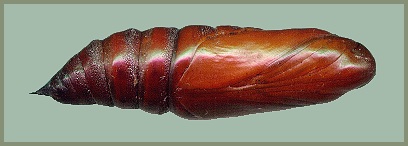
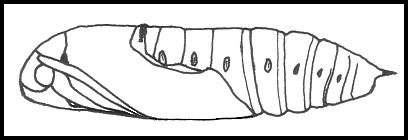
Ichneumonidae: Catadelphus arrogator (Fabricius, 1781), Metopius dentatus (Fabricius, 1779); Tachinidae: Drino vicina (Zetterstedt, 1849), Exorista larvarum (Linnaeus, 1758).
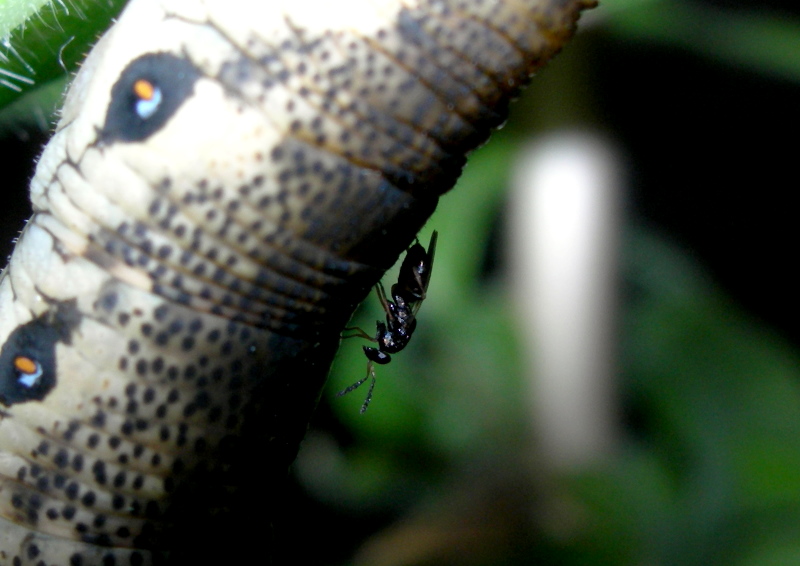
From western and central Europe (Newman, 1965) eastward across Poland (Bury, Krzysztof & Olbrycht, 2015), Lithuania, Latvia (Savenkov, 1989) and Belarus (Zolotuhin, 1997) to the southern Ural Mountains (Poltavsky & Artohin, 2000; Nupponen & Fibiger, 2002), Kazan (Zolotuhin, 1997), and parts of western Siberia as far north and east as Novosibirsk, Omsk, Tomsk (Leonid, iNaturalist, 2020) and Krasnoyarsk (Zolotuhin, 1997; Izerskiy, 1999; Stanislav, iNaturalist, 2020; Knyazev, 2020; Maksimov et al., 2022). Thence southwards to central Italy (Monte Rufeno) (Aguzzi & Leandri, 2020), the lower Volga (Eversmann, 1844; Zolotuhin, 1997), Ukraine (Plyushch & Sheshurak, 1997; Zolotuhin, 1997; Khalaim, 2022) and Crimea (Efetov & Budashkin, 1990; Zolotuhin, 1997), Albania (Rebel & Zerny, 1932), the Republic of North Macedonia (Krpač et al., 2019), Moldova (Zolotuhin, 1997; Timuș, Baban & Calestru, 2017), Romania (Corduneanu, 2011; Manci, Sitar, Corduneanu & Balan, 2015), Bulgaria (Ganev, 1984; Beshkov, 2009; Hristova & Beshkov, 2016), Greece (Fritsch, Stangelmeier, Top-Jensen & Bech, 2014), the Republic of Georgia (Zolotuhin, 1997; Didmanidze, Petrov & Zolotuhin, 2013), Azerbaijan (Didmanidze, Petrov & Zolotuhin, 2013; Snegovaya & Petrov, 2021) and Armenia (Didmanidze, Petrov & Zolotuhin, 2013; Wąsala & Zamorski, 2015). It also occurs from Turkey (de Freina, 2012; Akin, 2012; Okyar, 2012; Kemal & Košak, 2016; Košak & Kemal, 2018) eastwards across northern Iran (Kalali, 1976) to southern Turkmenistan (Danov & Pereladov, 1985; Zolotuhin, 1997; Dubatolov, [1999]), the Gissar and other mountains of southern and northeastern Uzbekistan (Zolotuhin, 1997; Shermatov et al., 2021; Omonov, Rahimov, Askarova & Khomidova, 2023), Tajikistan and the western Pamirs (Grum-Grshimailo, 1890; Zolotuhin, 1997), Kyrgyzstan (Korb, 2018; Lehmann, 2000; Toropov, Milko, Zhdanko & Evdoshenko, 2023), eastern Afghanistan (Ebert, 1969; Daniel, 1971), southern and eastern Kazakhstan (Zolotuhin, 1997; Kondratiev coll., NHMUK; Izerskiy, 1999; Toropov, Milko, Zhdanko & Evdoshenko, 2023), the Russian Altai (Davydov et al., 2023), the Tian Shan (Derzhavets, 1984), and western Xinjiang Province, China (Pittaway & Kitching, 2000).
There is an isolated population in Lebanon (Zerny, 1933; Ellison & Wiltshire, 1939; Talhouk, 1997), north-western Jordan (Müller et al., 2005a) and northern Israel (Bytinski-Salz, 1966; Eisenstein, 1984; Müller et al., 2005b; Yakov Salaviz, iNaturalist, 2025), as well as one in Sicily (Parenzan, 1995; Parenzan & Porcelli, 2006).
Another isolated population occurs in the Atlas Mountains of Morocco and Algeria (Rungs, 1967; Rungs, 1981), where it is confined to high elevations. It is also found in the Rif Mountains and north-western lowlands of Morocco (Rungs, 1981), and in several mountain ranges in southern Spain (Ribbe, 1909-1912; Pérez De-Gregorio et al., 2001; Romo et al., 2014).
This species is expanding its range in Europe. On 26 May 1985, the first (of two) British specimens, a male, was captured at Denton, near Newhaven, East Sussex (Pratt, 1985; Bretherton & Chalmers-Hunt, 1986). The most recent British record seems to be from Gairloch, Scotland, in 2020 (Henry McBeath, iNaturalist, 2020). Pratt also records it as having colonized the Ardennes, Belgium. Initially a rare migrant (Troukens, 1988), it is now a fairly common resident throughout this country, especially in the north (Wandels, 2008). Individuals have also been found in northern Germany, Denmark (R°dbyhavn), the Netherlands (Meerman, 1987) and around Paris and, on 4 May 1989, a single male was captured in Corsica (Guyot, 1990). Similar events appear to be occurring in Lithuania (Őablevicius, 2004; Ardinaviciute & DiÜkus, 2007), and european Russia (Zolotuhin, pers. comm.), with specimens having been found as far north as St. Petersburg and Moscow.
This species is protected in many European countries (Hermann, 2020; Sabella, Lisi & Viglianisi, 2015).
Extra-limital range. Western Xizang Province/Tibet (Chu & Wang, 1980b).
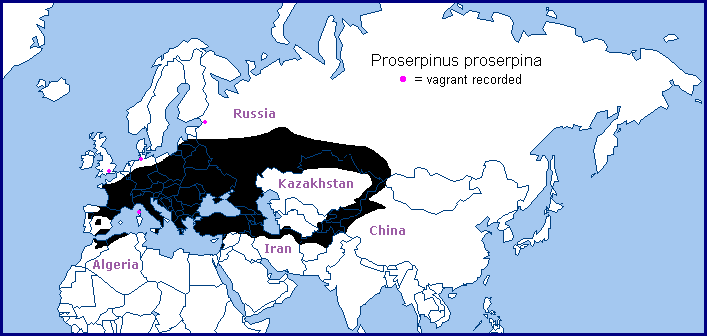
 Return to species list
Return to species list